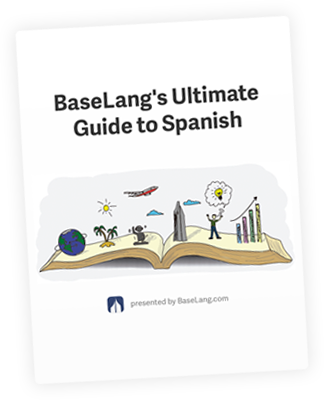“How do you feel?” in Spanish: Sentir vs Sentirse

Get our free email course, Shortcut to Conversational.
Have conversations faster, understand people when they speak fast, and other tested tips to learn faster.
More infoBoth sentir and sentirse mean “to feel” in English, and each verb can help us express our feelings in Spanish. There is nonetheless a small, yet critical, difference between the two: sentir describes what you feel, while sentirse describes how you feel.
In this brief guide, we’ll cover all the information you need to know about sentir vs sentirse in Spanish, including which one to use to describe what and how you feel, how to conjugate each, and helpful tips to make remembering these details easier.
Sentir is What You Feel, Sentirse is How You Feel
Both sentir and sentirse can be used to mean “to feel” in Spanish, but there is a subtle, key difference between these two verbs.
When we describe “what” we feel, we use the verb sentir. When we’d like to describe “how” we feel, on the other hand, we use the reflexive verb sentirse.
Another way to think about this difference is whether we’re trying to describe a noun or an adjective.
Nouns like happiness, confusion, or surprise – the “what” that we’re feeling – should be preceded by sentir.
Adjectives like happy, confused, or surprised – the “how” that we’re feeling – should be preceded by sentirse.
Let’s take a look at some examples to get a better idea for when we use each verb and why:
- Siento tristeza por la muerte de mi gato. – I feel sadness because of my cat’s death.
- Me siento muy triste por la muerte de mi gato. – I feel very sad because of my cat’s death.
Note the difference between a noun like “sadness” and an adjective like “sad” – to differentiate between the two, remember that adjectives describe a noun while nouns are people, places, or things.
- Ana siente mucho cansancio después del trabajo. – Ana feels a lot of tiredness after work.
- Ana se siente muy cansada después del trabajo. – Ana feels very tired after work.
Sentir: How to Use it
When we’d like to answer the question of “what” we are feeling, we turn to the verb sentir. The feelings we describe with sentir can be physical, or they can be abstract, like emotions or internal feelings.
Remember that when we use sentir, we’ll need to use a noun to complete the thought and explain “what” we are feeling.
Sentir can also be used before a phrase that starts with “que” to say that “I feel that.” We can’t use the phrase “me siento que” to mean “I feel that…” and instead only use “siento que.”
- Mis padres sienten orgullo por mi grado. – My parents feel pride because of my degree.
- Siento el agua muy fría. – I feel the ice-cold water.
- Sentí que no podía respirar. – I felt like I couldn’t breathe.
Sentir conjugation chart: Present tense
Remember that sentir is an irregular stem-changing (e:ie) verb. As a result, we’ll need to use an “ie” instead of the first “e” in our singular and third-person plural conjugations.
Below are the present tense conjugations of sentir:
| Subject | Sentir Conjugation: Present |
| Yo | siento |
| Tú | sientes |
| Él, Ella, Usted | siente |
| Nosotros, Nosotras | sentimos |
| Vosotros | sentís |
| Ellos, Ellas, Ustedes | sienten |
Sentirse: How to Use it
To answer the question “how do you feel?” in Spanish, we use the verb sentirse; the same applies when you want to ask someone else how they are feeling.
You might notice, based on its “-se” ending, that sentirse is a reflexive verb.
That means that you’ll need to use the appropriate reflexive pronoun (me, te, se, nos, os, se) along with your conjugated verb when constructing your sentences.
As with other reflexive verbs, the reflexive pronoun will go directly before the verb when conjugated (se siente), and attached to the end of the word when it’s in its infinitive form (sentirse), command form (siéntase), or in progressive tenses (sintiéndose).
You can use sentirse before an adjective or an adverb to express how you feel.
- Me siento orgulloso de mi trabajo. – I feel proud of my work.
- Andrés se siente hambriento porque no almorzó. – Andrés feels hungry because he didn’t have lunch.
- Me sentí mal por olvidar tu cumpleaños. – I felt bad for forgetting your birthday.
Sentirse conjugation chart: Present tense
To conjugate the verb sentirse, all we need to do is add our reflexive pronouns (me, te, se, nos, os, se) to the present tense conjugations of sentir.
Remember that sentir is a stem-changing verb, so when working with sentirse, the same rules about using “ie” still apply.
Here are the present tense conjugations of sentirse:
| Subject | Reflexive pronoun | Sentir Conjugation: Present |
| Yo | me | siento |
| Tú | te | sientes |
| Él, Ella, Usted | se | siente |
| Nosotros, Nosotras | nos | sentimos |
| Vosotros | os | sentís |
| Ellos, Ellas, Ustedes | se | sienten |
Conclusion: Sentir vs Sentirse
In English, you use just one word to describe sensations and emotions: feel. But, when we’d like to ask “how are you feeling?” in Spanish, we turn to two verbs: sentir, and sentirse.
There’s usually very little, if any, difference in meaning between sentir and sentirse; each one still translates as “to feel” in English.
So, the key difference between these verbs is what type of word they pair up with. Sentir is the way to go if your verb is followed by a noun, whereas you’ll want to use sentirse if you’re using an adjective or adverb.
With the information we’ve discussed under your belt, you’re equipped to express emotions and feelings like a pro. How will you use sentir and sentirse to connect with others?
Sentir vs Sentirse: Spanish Exercises
Now that you have a good grasp of the difference between sentir and sentirse, are you ready to try using each in context? This activity will allow you to practice deciding when to use sentir or sentirse and differentiate between nouns and adjectives.
Read each sentence carefully. Then, choose the correct conjugated verb to complete the sentence logically. Look out for reflexive pronouns to distinguish sentir from sentirse. The correct answers and translations are below.
1. Siento / Me siento emocionada porque voy a verte pronto.
2. Ella siente / se siente que el tiempo pasa muy rápido.
3. Mi mejor amigo siempre siente / se siente alegre cuando escucha salsa.
4. Ayer sentí / me sentí mucho estrés en el examen final.
5. Nunca hemos sentido / nos hemos sentido bien recibidos aquí.
6. ¿Sara, sientes / te sientes enfadada por lo que pasó anoche?
7. Las personas sienten / se sienten que él no será un buen presidente.
8. Si no los invitamos sentirán / se sentirán tristeza.
9. Ella no quiso venir porque sentía / se sentía enferma.
10. Siento / me siento bien cuando madrugo.
Answers
1. Me siento emocionada porque voy a verte pronto. – I feel excited because I am going to see you soon.
2. Ella siente que el tiempo pasa muy rápido. – She feels that time passes very quickly.
3. Mi mejor amigo siempre se siente alegre cuando escucha salsa. – My best friend always feels happy when he listens to salsa.
4. Ayer sentí mucho estrés en el examen final. – Yesterday I felt a lot of stress in the final exam.
5. Nunca nos hemos sentido bien recibidos aquí. – We have never felt welcome here.
6. ¿Sara, te sientes enfadada por lo que pasó anoche? – Sara, do you feel angry about what happened last night?
7. Las personas sienten que él no será un buen presidente. – People feel that he will not be a good president.
8. Si no los invitamos sentirán tristeza. – If we don’t invite them they will feel sadness.
9. Ella no quiso venir porque se sentía enferma. – She didn’t want to come because she felt sick.
10. Me siento bien cuando madrugo. – I feel good when I get up early.




